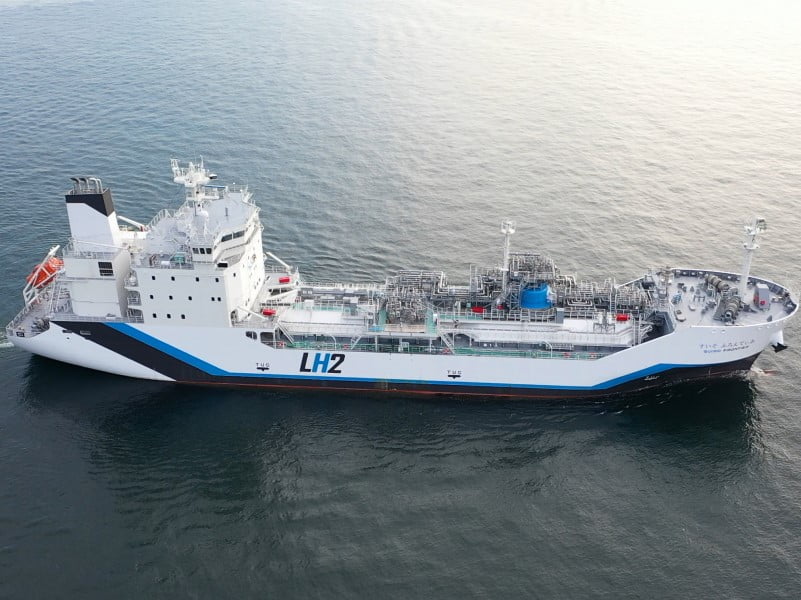Australia is expected to be the largest net-exporter of low-emissions hydrogen by 2050, according to the International Energy Agency’s 2022 edition of its World Energy Outlook.
This is equivalent to just over 50 billion cubic metres of natural gas equivalent (bcme) or about 10 times more than will be supplied domestically. The region expected to be the second largest exporter of low-emissions hydrogen is the Middle East, at around 38 bcme.
Although total low-emissions hydrogen production will be led by China, followed by the United States, it will almost be fully consumed domestically. Both these countries will have hydrogen production capacities beyond 150 bcme by 2050.
In the short-term, Australia is on track to be the world’s second largest hydrogen exporter by 2030, behind Latin America. Globally, low-emissions hydrogen production is currently less than around 3.3 bcme but is expected to ramp up to 100bcme by 2030.

The International Energy Agency (IEA) measures low-emissions hydrogen trade in natural gas energy equivalent because there are a number of hydrogen-based fuels, such as ammonia, that are used as a transport medium or consumed themselves.
Estimates cited from the report above are based on an Announced Pledges Scenario, which assumes that “all aspirational targets announced by governments are met on time and in full, including their long-term net-zero and energy access goals”.
To illustrate the cost of scaling hydrogen, the report claims that the 2030 capacity level will require investments totalling USD$170 billion in “electrolysers and carbon capture, storage, and utilisation equipment, and nearly three‐times this sum for new renewable electricity capacity, infrastructure and plants for conversion to hydrogen‐based fuels”.
The largest net-import markets for low-emissions hydrogen in 2050, will be the European Union followed by Japan and South Korea. Australia’s net-exports will be equivalent to just less than the sum of net-imports in Japan and South Korea.
Market access for Australian hydrogen to Japan and South Korea is already being secured. Several Japan-Australia partnerships for the development of hydrogen technologies are ongoing.
The first ever shipment of liquid hydrogen, which departed a Melbourne port for Kobe, Japan in January 2022.However, this shipment was for brown hydrogen.
A South Korean consortium recently signed a memorandum of understanding with a Queensland-based company to begin a $20 billion hydrogen and ammonia supply chain development project.
These build on the GreenTech partnerships, which includes commitments to develop hydrogen and ammonia technologies, that the federal government has formed with the government’s of Germany, Singapore, Japan, South Korea, India, and the United Kingdom. The world’s first Green Economy Agreement was signed between Singapore and Australia earlier this month.
Notably, the report cites the Asian Renewable Energy Hub in Western Australia, which will produce 9 Mt per year of low-emissions of ammonia, or 1.6 Mt of hydrogen per year, as having selected Japan and South Korea as its primary initial export targets.
This project still requires significant investment. “To be successful, the developers anticipate that they will need to raise over USD$35 billion,” according to the report.
During Senate Estimates on Friday, Greens Senator Sarah Hanson-Young noted that the World Energy Outlook 2022 states that fossil fuel producers can expect their profits to “double in 2022 to an unprecedented USD$4 trillion”, which is close to the estimated investment required to reach net-zero emissions by 2050.
As such, Ms Hanson-Young called on the Assistant Minister for Climate Change and Energy Jenny McAllister to increases taxes on fossil fuels companies to support renewable energy technology investments.
Ms McAllister reiterated the government’s commitment to meeting its emissions reduction targets and other obligations under the Paris Climate Change agreement, highlighting that it “will require significant amounts of investment, public, and private, to make that transition”.
Do you know more? Contact James Riley via Email.


Here is the ultimate question — does the report indicate that Australia has a bright energy export future, or that Australia’s hydrogen plans are pipe-dreams if not folly?
There are large and vociferous teams supporting both of the alternatives. This makes it a fraught policy space, and one to watch closely.